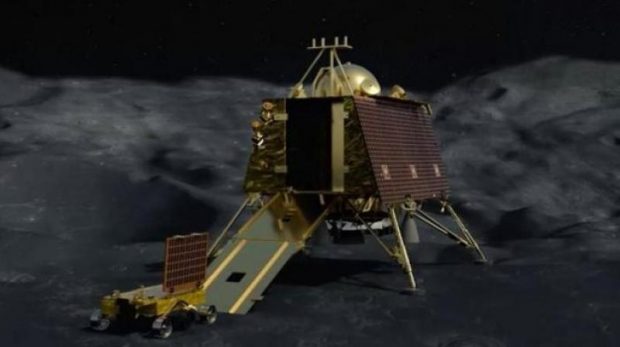
As Lunar night falls, hopes of waking up Chandrayaan-2’s lander is all but over
PTI, Sep 21, 2019, 10:13 AM IST

Bengaluru: Hopes of re-establishing contact with India’s moon mission Chandrayaan-2’s lander seems to be all but over with its 14-day mission life set to end and the Lunar night falling early Saturday.
Lander Vikram, with rover Pragyan housed inside it, lost communication with the ground station on September 7 during its final descent, just 2. 1 kms above the lunar surface, minutes before the planned touch-down on the Moon.
Since then, the Indian Space Research Organisation has been consistently saying all possible efforts were being made to establish contact with the lander, though the hopes kept fading with the lunar night phase approaching.
It was stated that the lander made a hard landing.
The lander, designed to execute a soft-landing on the lunar surface, and rover have a mission life of one Lunar day, which is equivalent to 14 earth days that ends Saturday.
ISRO has said once the Lunar night falls, there would be no sunlight for the lander to generate power for its working and also it was not designed to operate in the heavy cold temperature of Moon during the phase.
However, there has been no official word from the ISRO on the eve of night fall.
The space agency had on Thursday said a national-level committee comprising academics and ISRO experts are analysing the cause of communication loss with Chandrayaan-2 lander.
On September 8, ISRO said the lander was spotted on the lunar surface by camera on-board of the Chandrayaan-2 orbiter.
The orbiter of the India’s second lunar mission continued to perform scheduled science experiments to “complete satisfaction” and performance of all its payloads were “satisfactory”, it has said.
ISRO from the day of losing contact with the lander had been upbeat about the performance of the orbiter.
Till date 90 to 95 per cent of the Chandrayaan-2 mission objectives have been accomplished and it will continue contributing to Lunar science, not withstanding the loss of communication with the Lander, ISRO had said on September 7.
It had also noted that the precise launch and mission management has ensured a long life of almost seven years instead of the planned one year for the orbiter.
The orbiter carries eight scientific payloads for mapping the lunar surface and study the exosphere (outer atmosphere) of the Moon.
The Chandrayaan-2 is a Rs 978 crore unmanned moon mission with the satellite alone costing Rs 603 crore while the launch vehicle Rs 375 crore.
India’s Geosynchronous Satellite Launch Vehicle, GSLV MkIII-M1 successfully launched the 3,840-kg Chandrayaan-2 spacecraft into the Earth’s orbit on July 22.
The spacecraft successfully entered the lunar orbit on August 20 by performing Lunar Orbit Insertion (LOI) manoeuvre, and on September 2, ‘Vikram’ successfully separated from the orbiter.
Udayavani is now on Telegram. Click here to join our channel and stay updated with the latest news.
Top News

Related Articles More

Andhra Pradesh-based start-up tests ultra-high-frequency communication tech on ISRO’s POEM-4

New Year’s greetings with an artificial but intelligent twist

Space docking experiment: Spacecraft injected into right orbit, ISRO eyes another tech feat

GSLV mission planned in January would be 100th launch from Sriharikota: ISRO chief

From Karnataka to Orbit: Adichunchanagiri SJCIT, RVCE, & Bellatrix Launch Payloads on ISRO’s SpaDEx
MUST WATCH
Latest Additions

Union Carbide waste disposal: Two protesters attempt self-immolation in Pithampur, hospitalised

From seeking alms to managing traffic, incredible journey of 39 transgenders in Telangana
Bidar: CID begins investigation into contractor suicide case

Andhra Pradesh-based start-up tests ultra-high-frequency communication tech on ISRO’s POEM-4

‘Medical seats can’t remain vacant’: SC asks Centre to hold talks with stakeholders
Thanks for visiting Udayavani
You seem to have an Ad Blocker on.
To continue reading, please turn it off or whitelist Udayavani.





















